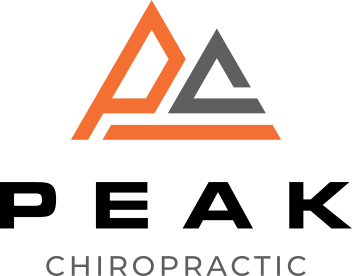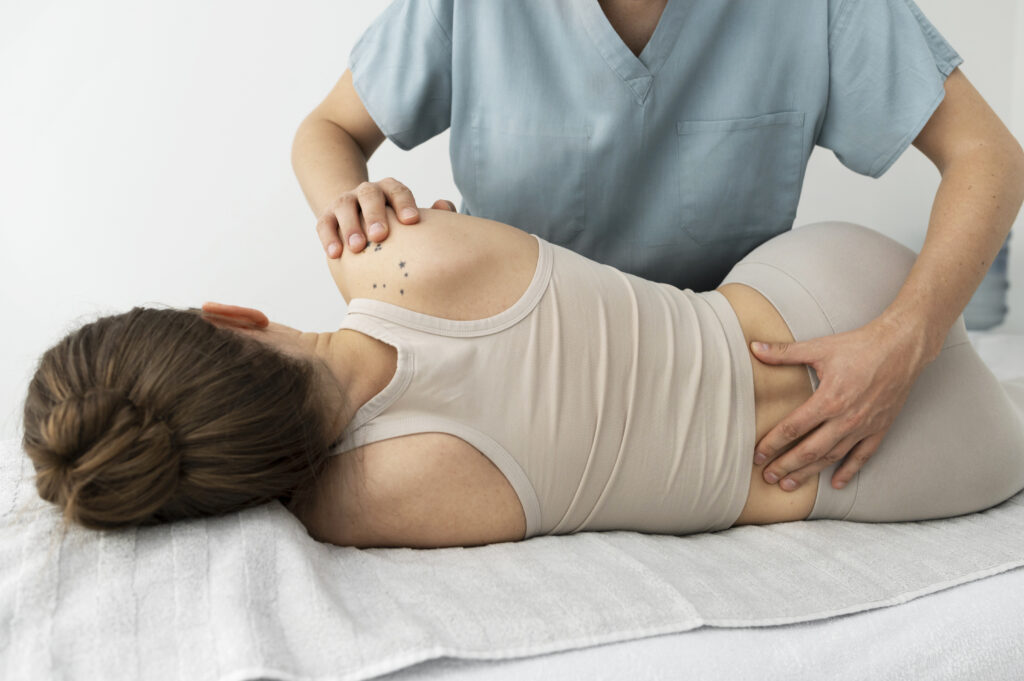When you face a sports injury, knowing the best recovery techniques can make all the difference in your healing process. Early intervention, like using the RICE method, is essential to minimize pain and swelling. But that's just the beginning; incorporating physical therapy and proper nutrition can greatly enhance your recovery journey. You might be surprised by the impact of factors like mental health and innovative recovery technologies. Understanding these techniques can empower you to bounce back stronger, but there's much more to explore about each one and how they work together effectively.
Importance of Early Intervention
When it comes to sports injuries, timely intervention is essential for a successful recovery. You might think that ignoring a minor injury won't lead to serious consequences, but that's often not the case. The sooner you address the issue, the better your chances are of minimizing long-term damage. Early intervention helps you manage pain effectively, reduces inflammation, and speeds up the healing process.
When you experience an injury, immediate actions like rest, ice, compression, and elevation (RICE) can make a significant difference. Ignoring these steps can lead to increased swelling and prolonged recovery times. By taking the right actions quickly, you not only alleviate discomfort but also reduce the risk of further complications.
Additionally, early intervention allows for a more accurate diagnosis. This means you can better understand the nature of your injury and take appropriate steps toward rehabilitation. If you wait too long, your condition may worsen, leading to more extensive treatments or even surgery.
Moreover, getting professional help early can provide you with tailored advice on how to proceed. Whether it's adjustments to your training routine or specific exercises to aid recovery, expert guidance can be invaluable.
Role of Physical Therapy
While you might think rest is all you need after a sports injury, physical therapy plays an important role in your recovery process. It's not just about letting your body heal; it's about ensuring that you regain strength, flexibility, and functionality.
A physical therapist can assess your injury and create a personalized plan tailored to your specific needs, focusing on the areas that require the most attention. Engaging in physical therapy helps you avoid complications that can arise from prolonged inactivity.
You'll work on exercises designed to improve your range of motion and strengthen the muscles surrounding the injured area. This targeted approach can greatly reduce the risk of reinjury, allowing you to return to your favorite sports without fear.
Moreover, physical therapy doesn't just address the physical aspects of recovery. Your therapist will also provide education on proper techniques and body mechanics, helping you understand how to prevent future injuries.
You'll learn about the importance of warming up, cooling down, and proper stretching techniques, which are vital for maintaining your body's health. Additionally, many physical therapy sessions include modalities such as ultrasound or electrical stimulation to reduce pain and promote healing.
These techniques can enhance your recovery experience, making it more efficient and effective. By actively participating in physical therapy, you're taking a proactive step toward a full recovery, ensuring that your body is ready to perform at its best when you return to sports.
Benefits of Rest and Recovery
Understanding the benefits of rest and recovery is fundamental for effective healing after a sports injury. When you push through pain or fatigue, you're risking further damage to your body. Giving yourself time to rest allows your muscles, ligaments, and joints to heal properly. This isn't just about lying on the couch; it's about actively engaging in recovery practices that promote healing.
During rest periods, your body repairs itself. Blood circulation increases, delivering essential nutrients to the injured areas, which accelerates recovery. By allowing adequate time for rest, you also help reduce inflammation and prevent complications that may arise from overexertion. You'll feel less pain and stiffness, making your eventual return to activity smoother and more effective.
Mental recovery is just as important. Injuries can take a toll on your mindset, and pushing too hard can lead to frustration and burnout. Taking a step back and focusing on recovery helps you regain your mental strength. This clarity will prepare you for the challenges ahead, ensuring you're ready to tackle your sport with renewed vigor.
Incorporating rest and recovery into your routine doesn't mean you can't be active. Gentle movements or low-impact exercises can maintain your fitness levels while allowing your injury to heal.
Prioritizing rest and recovery won't only get you back in the game faster but will also help you perform at your best when you return. Recognize these benefits, and make rest an integral part of your recovery plan.
Nutrition's Impact on Healing
When you're recovering from a sports injury, the right nutrition can make a significant difference in your healing process.
Essential nutrients like proteins, vitamins, and minerals support tissue repair, while staying hydrated guarantees your body functions efficiently.
Essential Nutrients for Recovery
To speed up your recovery from sports injuries, focusing on essential nutrients is critical. Nutrients play a significant role in healing tissues, reducing inflammation, and restoring your strength.
First, prioritize protein. It's important for repairing damaged muscles and tissues. Aim for lean meats, eggs, dairy, or plant-based sources like beans and lentils.
Next, don't overlook omega-3 fatty acids. Found in fatty fish, walnuts, and flaxseeds, these help reduce inflammation and support healing.
Vitamins and minerals also play crucial roles. Vitamin C is key for collagen production, so include citrus fruits, bell peppers, and broccoli in your diet.
Zinc, found in nuts and whole grains, aids in tissue repair and immune function.
Additionally, consider vitamin D and calcium for bone health, especially if you've sustained a fracture. Dark leafy greens and fortified foods can help meet these needs.
Lastly, antioxidants from fruits and vegetables, such as berries and spinach, combat oxidative stress, promoting faster recovery.
Hydration's Role in Healing
Hydration is an essential component of your recovery journey, influencing how well your body heals from sports injuries. Staying properly hydrated helps maintain ideal blood circulation, which delivers necessary nutrients to injured tissues. It also aids in regulating body temperature and reducing inflammation.
Here are four key reasons to focus on hydration during your recovery:
- Improved Nutrient Delivery: Water helps transport critical nutrients to your cells, promoting faster healing and recovery.
- Reduced Inflammation: Staying hydrated can help lower inflammation, allowing your body to recover more effectively.
- Joint Lubrication: Proper hydration keeps your joints lubricated, reducing discomfort and stiffness during your recovery process.
- Enhanced Muscle Function: Adequate hydration supports muscle function and prevents cramps, helping you regain strength and mobility.
Make it a habit to drink water throughout the day and consider incorporating electrolyte-rich beverages after workouts or intense physical activities.
Monitor your hydration levels by checking the color of your urine; light yellow indicates proper hydration.
Use of Compression Therapy
Compression therapy is a highly effective method for reducing swelling and enhancing recovery after sports injuries. When you apply pressure to the injured area, it helps limit the accumulation of fluids, which can otherwise lead to prolonged swelling and discomfort. This technique can be particularly beneficial in the acute phase of an injury, where timely intervention is essential.
You can utilize various forms of compression therapy, including elastic bandages, compression garments, or specialized devices like pneumatic compression boots. Each option provides a different level of pressure and can be tailored to your specific needs. When using elastic bandages, be sure to wrap the area snugly but not too tight, as this can restrict blood flow and cause further issues.
In addition to reducing swelling, compression therapy can also improve circulation. Enhanced blood flow means that vital nutrients and oxygen reach the injured tissue more efficiently, which aids in the healing process. You might find that wearing compression garments during and after physical activities helps maintain ideal muscle temperature, reducing the risk of further injury.
It's important to remember that while compression therapy is effective, it shouldn't be the sole method of treatment. Combining it with other recovery techniques, like rest, ice, and elevation, will yield the best results.
Always listen to your body, and consult a healthcare professional if you're unsure about the appropriate level of compression or how to integrate it into your recovery plan.
Incorporating Stretching and Mobility
While compression therapy plays an essential role in managing swelling and promoting recovery, incorporating stretching and mobility exercises can further enhance your rehabilitation process.
These practices not only help maintain flexibility but also improve blood circulation and range of motion, which are vital for effective healing. As you work on your recovery, consider integrating the following techniques into your routine:
- Dynamic Stretching: Start with dynamic stretches that warm up your muscles and joints. Movements like leg swings, arm circles, and torso twists prepare your body for activity and increase blood flow to the injured area.
- Static Stretching: After your workouts or rehabilitation sessions, include static stretching. Hold each stretch for 15-30 seconds to improve flexibility and reduce tension in your muscles. Focus on areas around the injury to promote recovery.
- Foam Rolling: Utilize a foam roller to perform self-myofascial release. This technique helps relieve muscle tightness and improve mobility. Roll out the affected area gently, spending extra time on any knots or tight spots.
- Mobility Drills: Incorporate mobility drills specific to your injury. These exercises, like ankle circles or hip openers, can help regain lost range of motion and prepare your body for returning to your sport.
Innovative Recovery Technologies
When you're recovering from a sports injury, innovative recovery technologies can make a real difference.
Techniques like cryotherapy can reduce inflammation and speed up healing, while electrical stimulation devices help revive muscle function.
Exploring these options might just give you the edge you need to bounce back stronger.
Cryotherapy Benefits
Cryotherapy, with its ability to rejuvenate muscles and reduce inflammation, has gained traction as a cutting-edge recovery technique in the world of sports. By exposing your body to extreme cold, cryotherapy helps to accelerate healing processes, making it an appealing option for athletes looking to bounce back quickly after injuries.
Here are some key benefits of cryotherapy that you'll definitely want to evaluate:
- Reduced Inflammation: The cold temperature constricts blood vessels, which can help decrease swelling and inflammation in injured areas.
- Pain Relief: Cryotherapy can numb nerve endings, providing immediate relief from pain and discomfort.
- Improved Recovery Time: By stimulating circulation and metabolic processes, cryotherapy can help speed up recovery, allowing you to get back to your training sooner.
- Enhanced Performance: Regular sessions can improve your overall physical performance by reducing muscle soreness and fatigue.
Incorporating cryotherapy into your recovery routine might just be the game-changer you need to stay at the top of your game.
Embrace this innovative technique and feel the difference in your recovery journey!
Electrical Stimulation Devices
As you explore innovative recovery technologies, electrical stimulation devices stand out for their ability to enhance muscle recovery and rehabilitation. These devices use electrical impulses to stimulate muscle contractions, improving blood flow and reducing pain.
You'll find that they can be particularly beneficial during the early stages of recovery when mobility may be limited.
Using these devices regularly can help you maintain muscle tone and prevent atrophy while you're recovering from an injury. They're often used in physical therapy settings, but you can also find portable options for home use. This means you can incorporate electrical stimulation into your daily routine, making it easier to stay committed to your recovery process.
When using stimulation devices, it's crucial to follow the manufacturer's guidelines and consult with your healthcare provider. They can help you determine the right settings and duration of use based on your specific injury and recovery goals.
Mental Health and Recovery
Recovering from a sports injury involves not just physical healing but also significant mental fortitude.
You might find that the mental aspect of recovery can be just as challenging, if not more so, than the physical rehabilitation. It's crucial to focus on your mental well-being to guarantee a holistic recovery process.
Here are some techniques to help you maintain a positive mindset during your healing journey:
- Set Realistic Goals: Break down your recovery into manageable milestones. Celebrate small victories along the way to keep your motivation high.
- Stay Connected: Reach out to friends, family, or teammates. Sharing your feelings and experiences can provide emotional support and reduce feelings of isolation.
- Practice Mindfulness: Techniques like meditation or deep-breathing exercises can help you manage stress and anxiety. These practices can keep you grounded and focused on the present moment.
- Visualize Success: Spend time visualizing yourself back in action, performing your sport at your best. This mental imagery can boost your confidence and reinforce your commitment to recovery.
Conclusion
Incorporating these top techniques into your recovery plan can make a significant difference in your healing journey. By prioritizing early intervention, engaging in personalized physical therapy, and focusing on nutrition, you'll set yourself up for success. Don't underestimate the power of rest, compression therapy, and innovative technologies. Remember, maintaining your mental health through mindfulness and goal-setting is just as essential. Embrace this holistic approach, and you'll be back to your best in no time!



